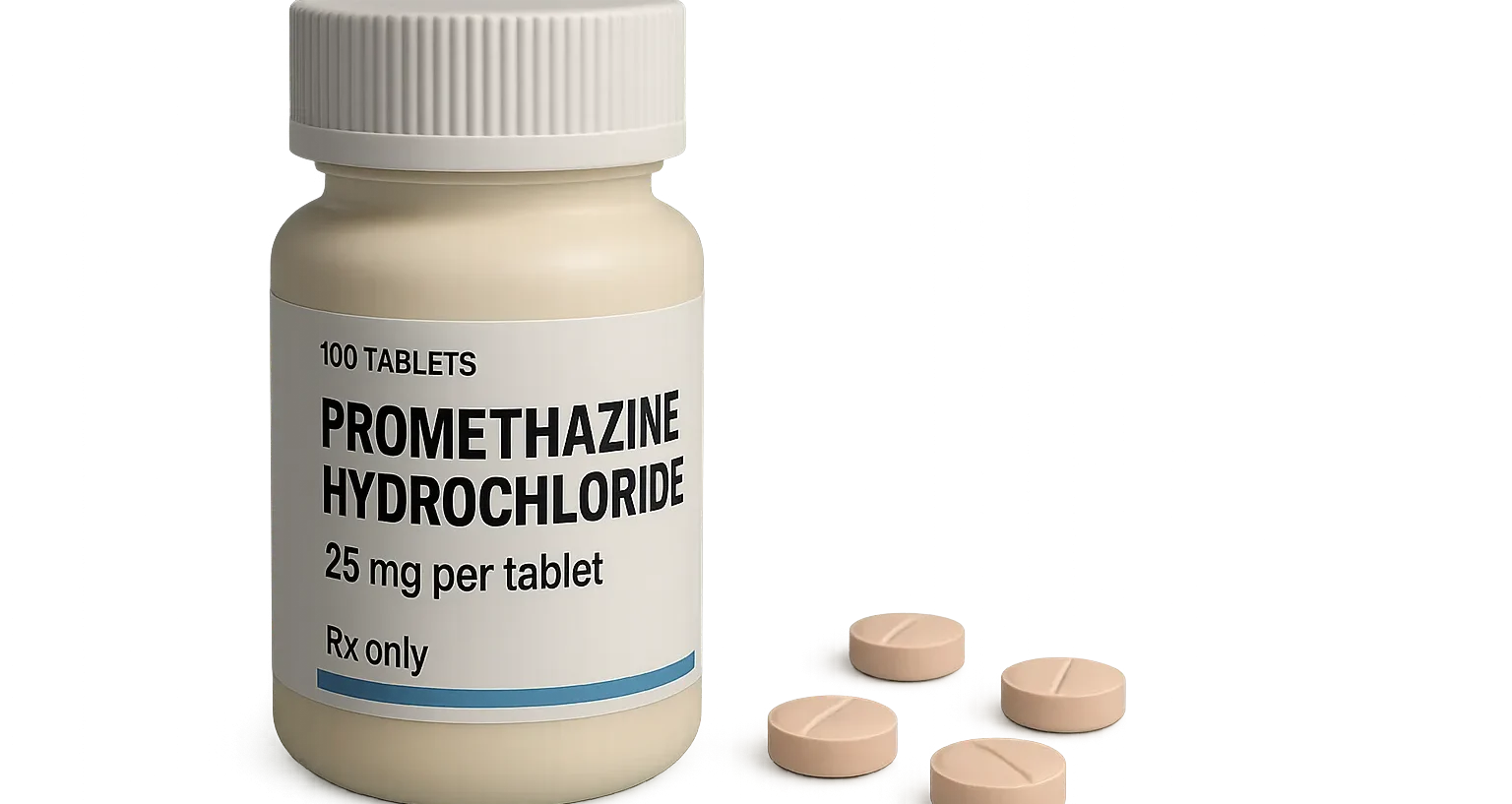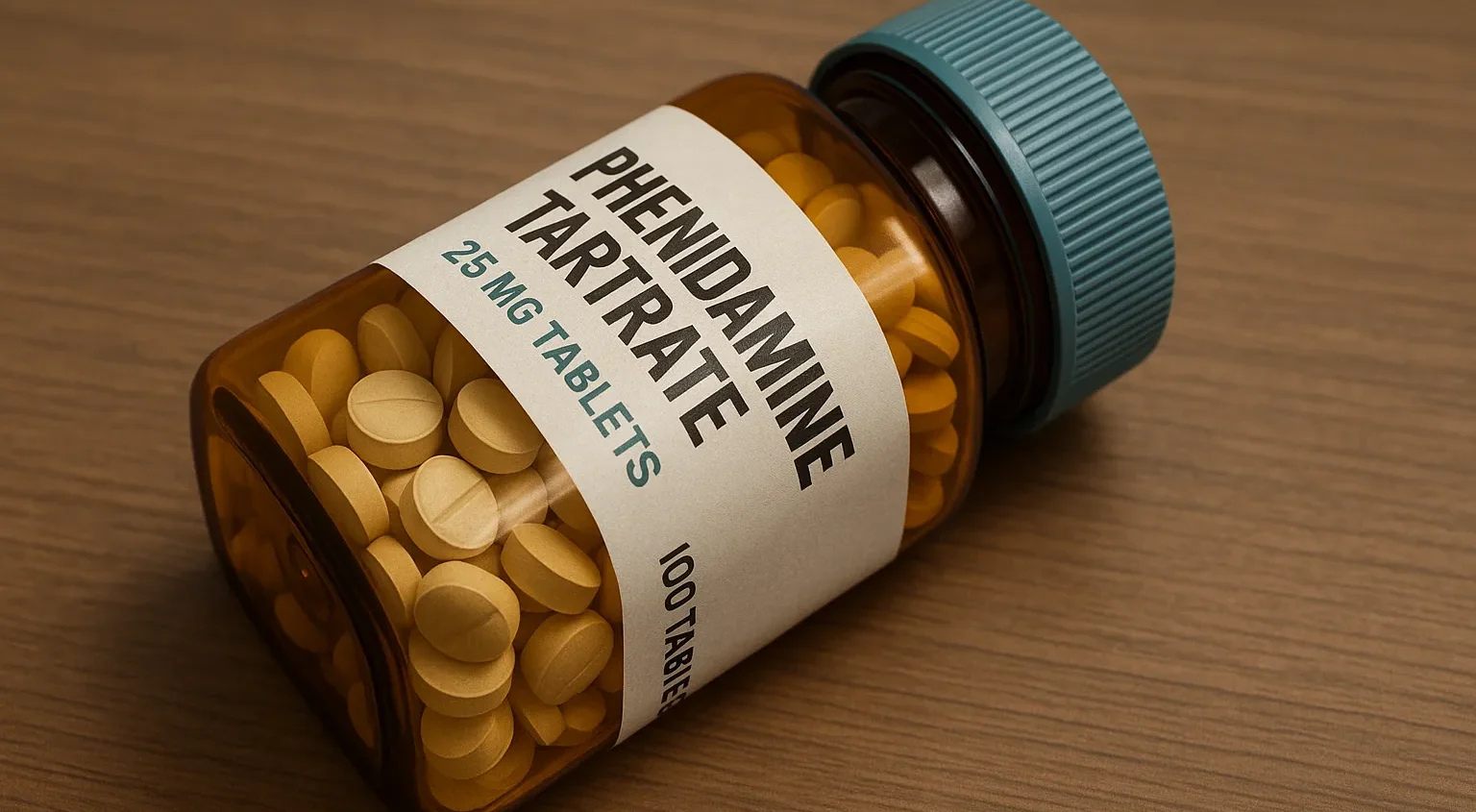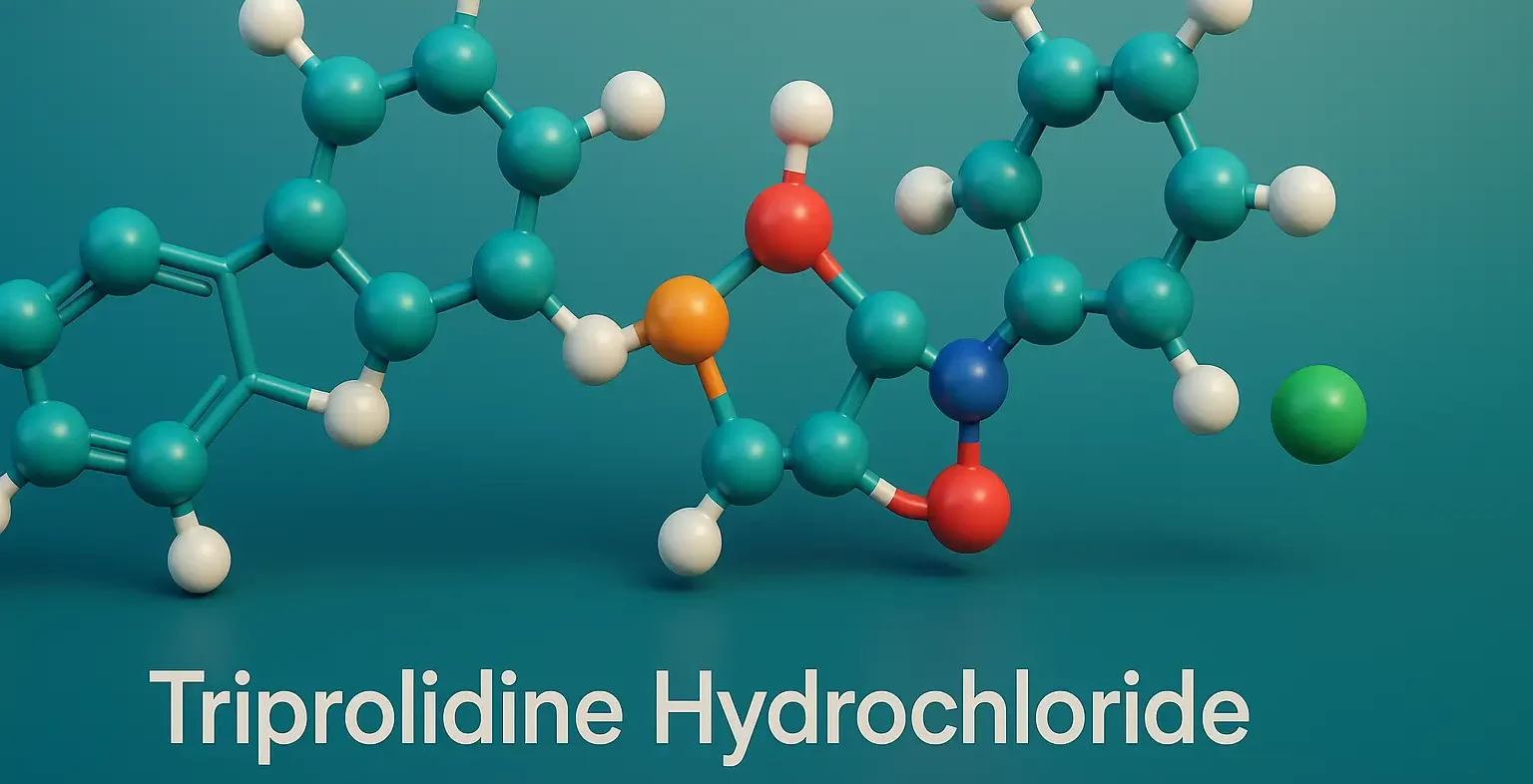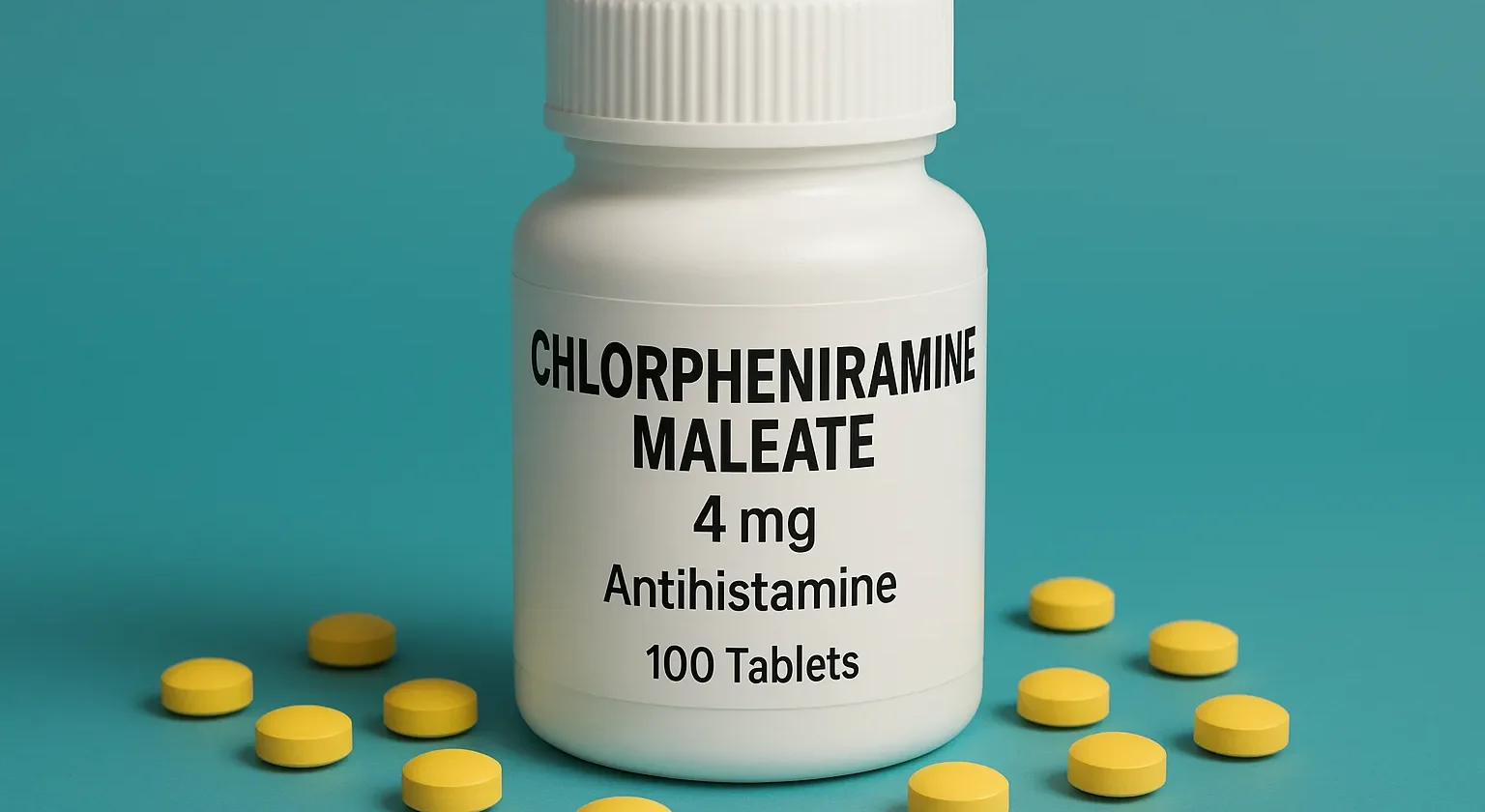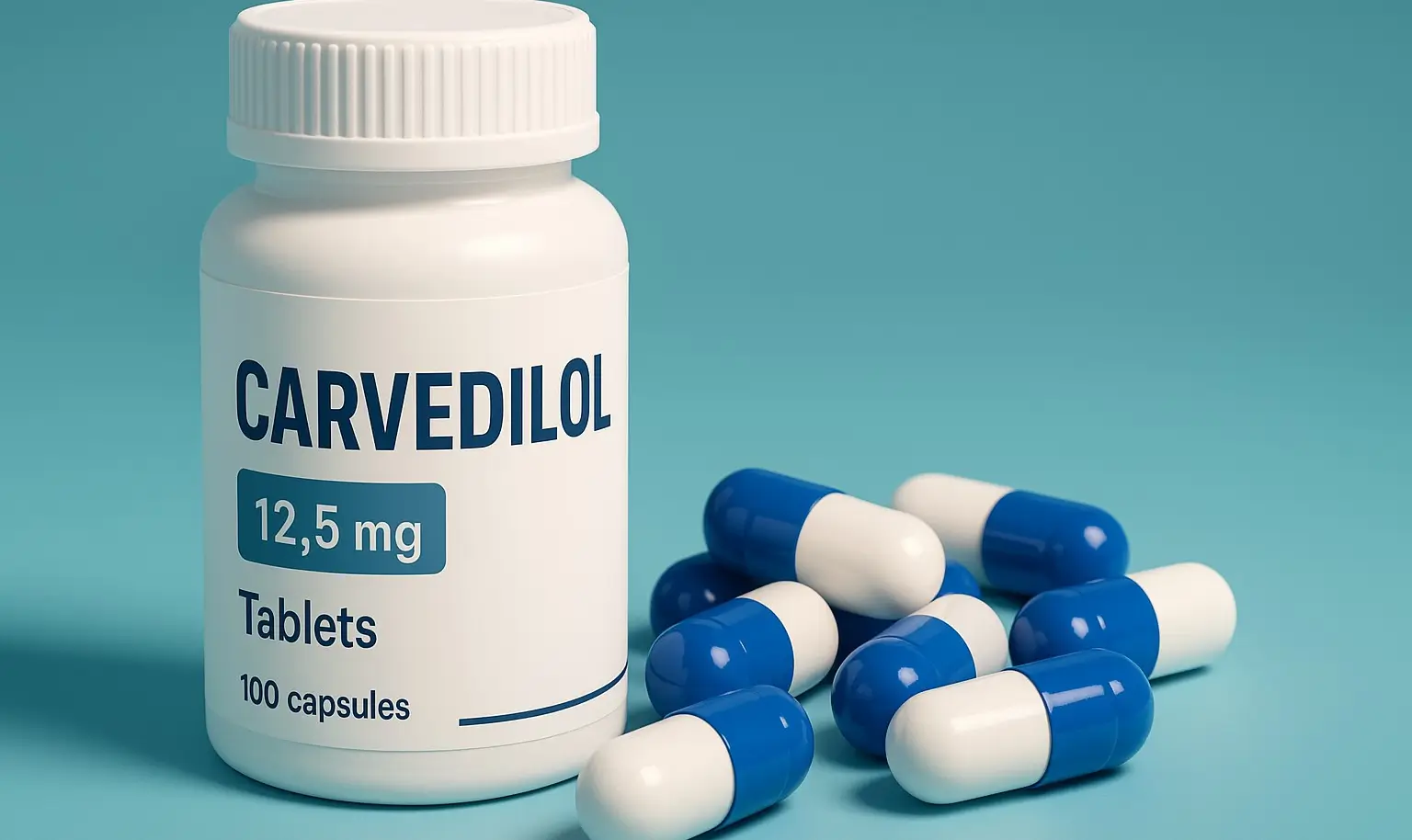Promethazine Hydrochloride
Promethazine Hydrochloride is a tricyclic H₁-antihistamine with sedative, antiemetic, and anticholinergic properties used in allergy and nausea treatment. Structure of Promethazine Hydrochloride Promethazine possesses a tricyclic structure with two benzene rings fused to a central carbon and connected to a dimethylaminoethyl side chain. The hydrochloride salt enhances solubility. Chemical Formula: C₁₇H₂₈N₂S·HCl Mode of Action Acts … Read more

